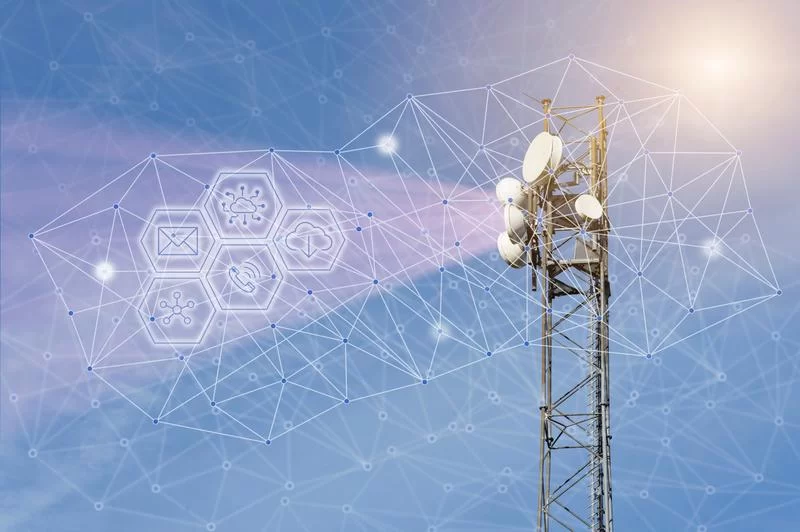Enhancing Energy Efficiency in Telecom Sites: Key Strategies and Technologies

Energy efficiency in telecom sites has become a top priority as the demand for faster and more reliable communication networks increases. Telecom operators need to manage growing energy consumption while maintaining operational reliability and minimizing costs. Improving energy efficiency not only reduces operational costs but also aligns with global sustainability goals by lowering the carbon footprint of telecom infrastructure.
In this article, we explore key strategies and technologies that can help optimize energy use in telecom sites, ensuring efficient operations while reducing environmental impact.

The Importance of Energy Efficiency in Telecom Sites
Telecom sites, such as cellular towers and data centers, require constant energy to power various systems, including cooling, transmission equipment, and backup power supplies. As networks expand, energy consumption in the telecom industry continues to rise, making it crucial to implement energy-efficient solutions.
- Cost Reduction: Telecom companies spend a significant portion of their budget on energy costs. Implementing energy-efficient measures can lead to substantial savings.
- Environmental Sustainability: By optimizing energy use, telecom companies contribute to global efforts to reduce greenhouse gas emissions, promoting a cleaner environment.
- Operational Reliability: Energy-efficient systems reduce the strain on power supplies and cooling systems, leading to longer equipment life and fewer breakdowns.
Key Strategies for Improving Energy Efficiency in Telecom Sites
1. Upgrading to Energy-Efficient Equipment
Modernizing telecom infrastructure with energy-efficient technologies is one of the most effective ways to reduce energy consumption. Upgrading legacy equipment, such as power amplifiers, rectifiers, and air conditioning systems, can lead to immediate energy savings.
- Rectifier Systems: High-efficiency rectifiers can convert AC power to DC with minimal energy loss, reducing power consumption by up to 30%.
- Energy-Efficient Amplifiers: Replacing older amplifiers with modern, high-efficiency models can also significantly cut energy use.
2. Implementing Renewable Energy Solutions
Integrating renewable energy sources, such as solar and wind power, can greatly reduce reliance on traditional energy grids. This is particularly useful for remote telecom sites, where access to a stable power supply may be limited.
- Solar Power: Many telecom companies are adopting solar energy solutionsto power remote base stations. Solar panels can provide a sustainable and reliable source of energy, especially in regions with high solar irradiance.
- Wind Power: For telecom sites located in windy regions, wind turbines can supplement or replace grid energy, enhancing energy independence and efficiency.
3. Utilizing Smart Cooling Systems
Cooling systems consume a significant amount of energy in telecom sites, especially in data centers. Adopting smart cooling technologies, such as free cooling, liquid cooling, and dynamic thermal management, can drastically improve energy efficiency.
- Free Cooling: This system takes advantage of outside air to cool equipment, reducing the need for air conditioning.
- Liquid Cooling: By transferring heat directly to liquid, this method reduces the energy required for cooling compared to traditional air-cooled systems.
4. Deploying Advanced Power Management Systems
Advanced power management systems help telecom operators monitor and optimize energy consumption in real time. These systems can automatically adjust energy usage based on demand, ensuring that energy is not wasted during low-traffic periods.
- AI and Machine Learning: Incorporating AI-powered systems allows for predictive maintenance and real-time adjustments, optimizing energy use while preventing equipment failure.
- Battery Backup Solutions: Efficient battery backup systems, including lithium-ion batteries, provide reliable power during outages and reduce the energy needed from diesel generators.
5. Energy Storage Solutions
The implementation of energy storage systems can also significantly boost the energy efficiency of telecom sites. These systems store excess energy generated from renewable sources or during off-peak hours for use when demand is higher, reducing dependency on the grid and lowering costs.
Energy efficiency in telecom sites is critical for reducing operational costs, enhancing reliability, and contributing to global sustainability efforts. By upgrading to modern, energy-efficient equipment, utilizing renewable energy, and adopting smart cooling and power management solutions, telecom operators can significantly reduce their energy consumption.
For more information about how we can help optimize energy efficiency in your telecom infrastructure, visit our energy efficiency solutions page and explore our innovative products and services.
FAQs
- What are the benefits of improving energy efficiency in telecom sites?
Improving energy efficiency reduces operational costs, extends equipment life, and lowers the environmental impact by reducing energy consumption and greenhouse gas emissions. - How do renewable energy solutions help telecom sites?
Renewable energy solutions, such as solar and wind power, provide a sustainable and reliable energy source, especially for remote sites, reducing dependence on the grid and lowering energy costs. - What technologies can optimize energy use in telecom sites?
Technologies like high-efficiency rectifiers, smart cooling systems, and AI-powered power management systems help optimize energy use, ensuring that telecom infrastructure operates efficiently.
